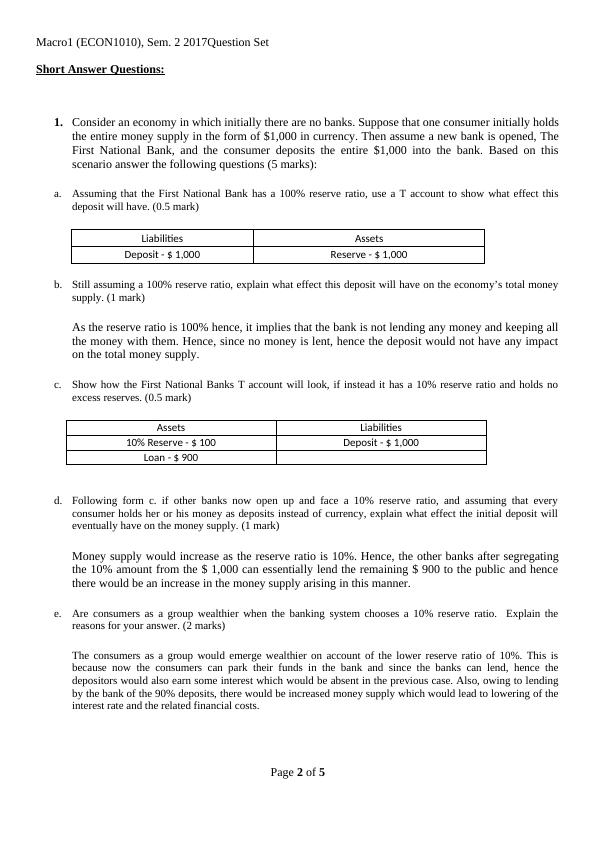The Monetary System (Chapter 29 or Chap 29) and Macro1 (ECON1010), Sem. 2 2017 Question Set
5 Pages2083 Words249 Views
Introductory Microeconomics (ECON1010 Introductory Microeconomics)
Added on 2020-04-07
About This Document
Only a single submissionpermitted (hence, please ensure to attach the file version of the assignment) Use and Submit this template onlyfor your submission (i.e., write down your answers in the space provided in each question and submit) – any other form of the file is NOT accepted (Failing to do so will automatically mean zero mark for this task). If you do not have a word processor installed in your home computer, follow this link and in “APPS” you can use
The Monetary System (Chapter 29 or Chap 29) and Macro1 (ECON1010), Sem. 2 2017 Question Set
Introductory Microeconomics (ECON1010 Introductory Microeconomics)
Added on 2020-04-07
ShareRelated Documents
End of preview
Want to access all the pages? Upload your documents or become a member.
Macroeconomics - Assignment Sample
|6
|1807
|212
ECON1010- Principles of Economics
|6
|1884
|123
MACRO1 (ECON1010) Assignment - Desklib
|6
|2709
|226
Macro1 (ECON1010) - Assignment
|7
|3019
|194
CDOP3103 | Assignment
|5
|708
|190
Recruitment and Retention Strategies for Project Teams
|12
|3637
|492


